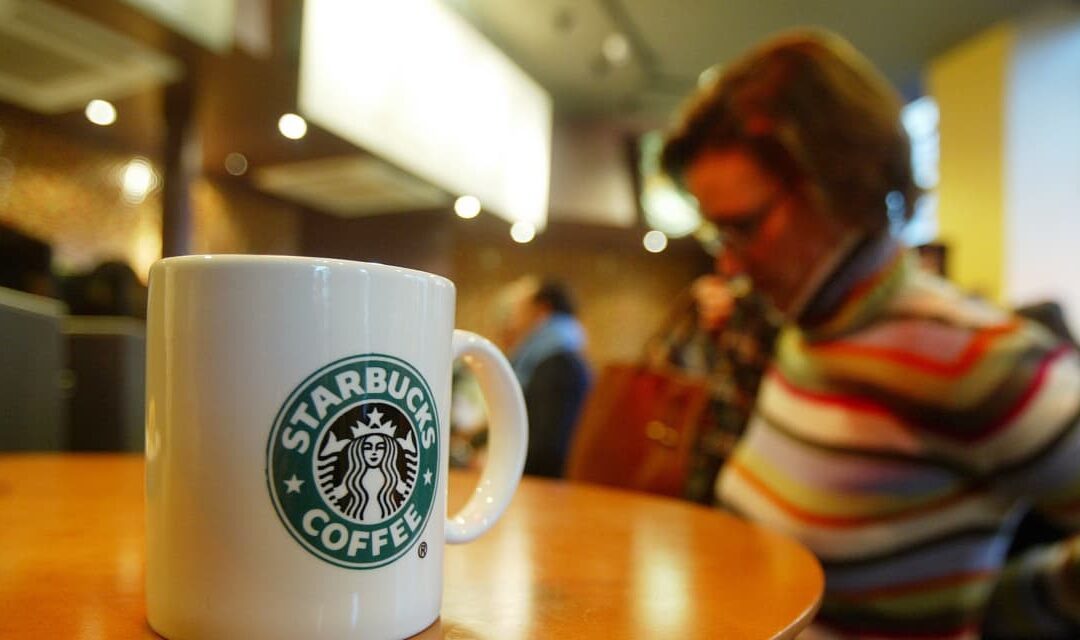Some personal-finance pundits argue that buying a cup of coffee every day could set you on the road to financial ruin, or at least, prevent you from becoming a millionaire. But the world’s biggest coffee chain is trying to turn that habit into a money-saving deal that will also help the planet.
Starbucks
SBUX,
will now let customers use their own cups for almost all orders, and customers who bring in their own cup, known as a “personal cup,” will get 10 cents off their drink order at company-operated or company-licensed stores.
Starbucks first introduced the 10-cent discount for customers using their own cups in 1985, but this week the company expanded the offer to mobile and drive-thru orders, which make up a big chunk of the store’s sales. Almost two-thirds of U.S. Starbucks orders in the third quarter of 2022 were mobile, drive-thru and delivery orders, with mobile orders alone making 47% of the sales, the company said in an earnings call.
U.S. customers who are members of the Starbucks rewards program will earn 25 “bonus stars” on top of the discount. Customers can use the stars for perks like free refills on tea and free food and other merchandise.
For daily Starbucks customers, bringing their own cup consistently adds up to a modest cash savings: 70 cents a week, about $3 a month and $36.50 a year. That’s not enough to cover most streaming subscriptions, for example, which currently range from $7.99 a month for Hulu with ads to up to $19.99 a month for HBO Max without ads.
But for members of the Starbucks loyalty program, the additional 25 bonus stars opens up more opportunities to save: for every four drinks that use a personal cup, the member earns 100 stars, which can buy a free hot or iced coffee. For every eight drinks, or 200 stars, they can get a free handcrafted drink or breakfast sandwich.
A hardcore Starbucks user who visits daily with their reusable cup could earn 9,125 bonus stars per year, enough to cover about 45 breakfast sandwiches, or about 91 cups of free iced coffee. Starbucks breakfast sandwiches are currently priced at around $6.55 to $8.75 in New York City.
‘Peeing money down the drain’
While buying a cup of coffee is a daily habit of many, it’s not historically favored by some financial advisors. Suze Orman, author of “Women and Money,” has said that buying coffee every day amounts to “peeing $1 million down the drain.” Orman said putting $100 a month — a little more than $3 on coffee a day — would turn into $1 million after 40 years in a Roth IRA. That’s assuming a healthy 12% return, but even at 7%, that would give you an extra $250,000 for your golden years.
“I wouldn’t buy a cup of coffee anywhere, ever — and I can afford it,” Orman told CNBC in 2019. “I would not insult myself by wasting money that way.”
David Bach’s national bestseller “The Automatic Millionaire: A Powerful One-Step Plan to Live and Finish Rich” introduced the “the latte factor” to the masses: the idea that skipping small daily purchases such as lattes and investing that money instead was a sure-fire way to build wealth.
However, other financial pros have debunked that assertion, arguing that small purchases are not the cause of many Americans’ financial instability. Others say those in the anti-latte camp overlook the fact that buying coffee can also generate opportunities to socialize, a sense of joy, and even career opportunities.
About 1.2% of Starbucks drinks used reusable cups in 2022
The coffee chain said expanding the reusable cup program will help the company meet its goal of reducing its waste by 50% by 2030. Over the past two years, Starbucks has experimented with the reusable cup program in more than 20 markets globally. The company has used both financial incentives and disincentives to learn how to best influence customer behavior, the spokesperson said.
Customers are welcome to use any kind of cup, the company said, no matter the shape, size or material. But the cups have to be clean, and baristas will not help customers wash their cups.
For mobile orders, baristas will have the drink ready in a store reusable cup at the bar, and once customers arrive with their own cup, baristas will transfer the drink contents into the customer’s cup and add the finishing touches in person, a Starbucks spokesperson told MarketWatch.
Few customers took advantage of the discount for reusable cups when it was available only on in-store orders. In 2022, about 1.2% of drinks were sold in reusable cups, according to Starbucks’ 2022 annual report. That was an increase from 2021, when less than 1% were sold in reusable cups.









